Ancient volcanic eruptions disrupted Earth's thermostat, creating a 'snowball' planet
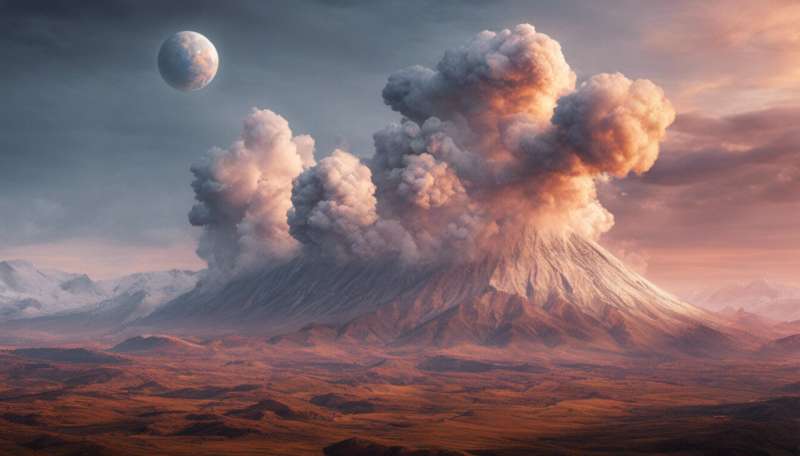
One of the most extreme climate episodes the Earth has experienced was during the so-called Snowball Earth, 720 million years ago. During this period glaciers spanned from the poles to the tropics, resulting in a planet entirely covered by ice.
The Snowball Earth hypothesis has been the subject of scientific debate for around 20 years: scientists are both fascinated and perplexed about how the planet could descend into such a weird climatic state.
New research now points to spectacularly large volcanic eruptions as being key in this process. We suggest this happened because large amounts of carbon dioxide were pulled out of the atmosphere after huge eruptions, and this led to a loss of heat from the Earth's surface.
Surprisingly, the mechanism for this appears to be rock erosion.
Different kinds of volcanoes
Relationships between volcanic eruptions and climate are well established. For example, sulphur injected into the atmosphere from the 1991 eruption of the Philippines' Mount Pinatubo lowered global temperatures by approximately half a degree for about 15 months. The sulphur reflected incoming solar radiation and lowered global temperatures.
Volcanos like Mt Pinatubo are part of volcanic arcs that produce relatively small volumes of erupted materials. Across the world, arc volcanoes together produce less than one cubic kilometre (1km³) of erupted material per year.
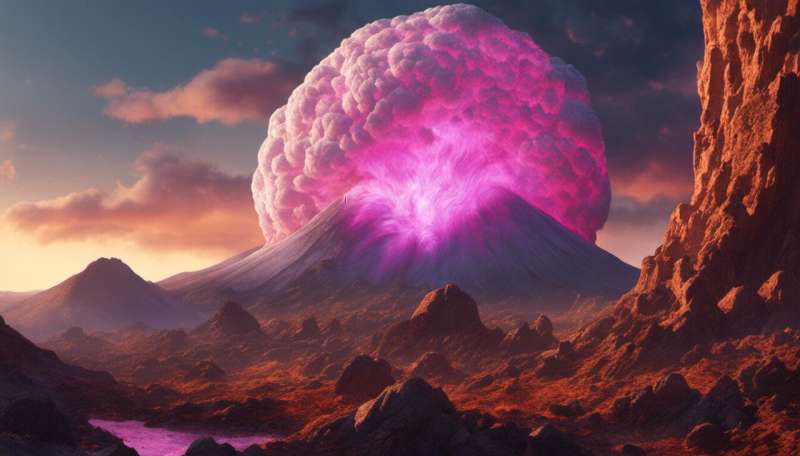
Compare this to a type of volcanic eruption referred to as a "large igneous province" (we'll refer to them here as a LIP). These eruptions are spectacularly large, producing in excess of 100km³ per year of lavas, and crucially, have total eruption volumes in excess of 1 million km³ and cover an area greater than 1 million km². (For comparison, the area of South Australia is roughly 1 million km²). These are continental-scale resurfacing events.
More than 300 of these LIP eruptions have been recognised throughout Earth's history, and they appear to peak in semi-regular cycles.
Long term climatic effects
While some relatively small volcanic eruptions will have short term climatic effects, the long-term effects of LIP volcanoes may be profound.
The reason for this boils down to simple chemistry. Carbon dioxide in the atmosphere dissolves in rain, and falls to the ground where it reacts with silicate minerals in the rocks. Carbon dioxide forms bicarbonate, and ultimately becomes locked away in limestones and shale rock formations.
Over hundreds of thousands of years the amount of carbon dioxide in the atmosphere is quite effectively regulated in this way. Scientists estimate that weathering of rocks consumes approximately 600 million tons of carbon dioxide per year.
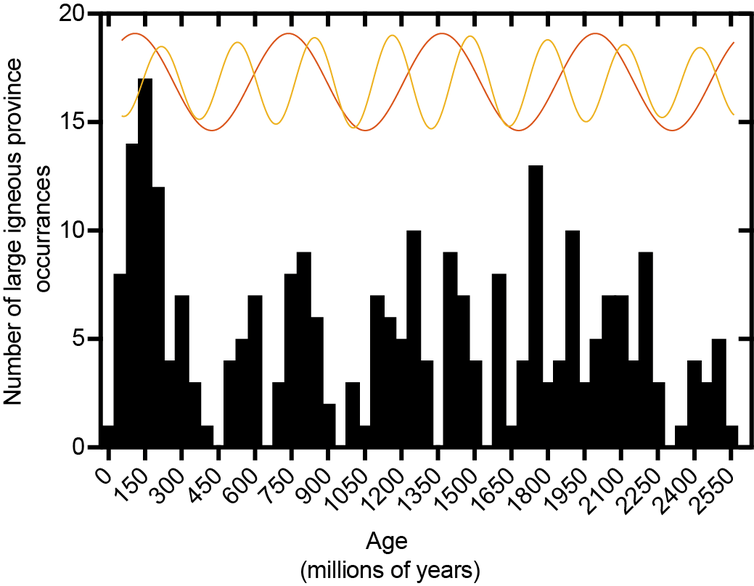
Geological formations from LIP volcanic eruptions are particularly susceptible to this process, as they are largely composed of basalts, a type of fine-grained volcanic rock that weathers relatively quickly and soaks up carbon dioxide more effectively than other rocks, such as granite.
But LIP volcanic eruptions can also affect climate in another way: through triggering photosynthesis.
Linking volcanic eruptions to photosynthesis might seem strange, but it all comes down to nutrients. We have recently shown that the erosion of geological formations such as basalt from LIP volcanoes fertilises rivers and oceans by releasing phosphorus.
Phosphorus is an essential component of DNA and all life requires it. Over long time periods, phosphorus is the nutrient that regulates the rate of photosynthesis. And when photosynthesis takes place, it too pulls carbon dioxide from the atmosphere.
Descent into Snowball Earth
Our most recent paper focused on determining if the erosion of basalt from LIP volcanoes contributed to the reduction in atmospheric carbon dioxide associated with Snowball Earth. Initial modelling predicted a halving of atmospheric carbon dioxide would be required to drive the earth into the Snowball state.
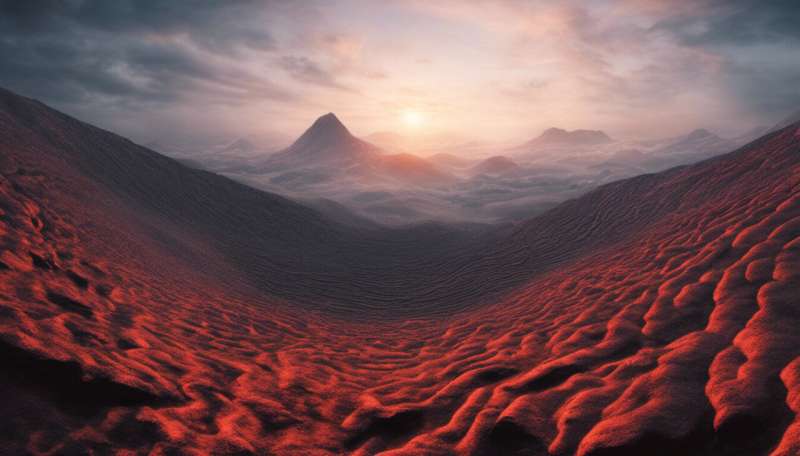
To do this, we measured different forms (known as isotopes) of the rare earth element neodymium (Nd) that track the erosion of basalt in sedimentary rocks. We particularly focused on the contribution of eroded basalt in shales, which are rock formations created from continental erosion.
Also, we measured isotopes of the element strontium (Sr) in limestones, which record the chemical composition of ancient seawater.
From this work we found that basaltic erosion just before the Snowball Earth, was more than 100% greater than what we see today.
This basalt was sourced from three prominent LIPs, which erupted in a cascading sequence beginning 830 million years ago in Australia, 780 million years ago in North America and 720 million years ago in northern Canada. All three of these LIPs erupted in what was then the equatorial region, which favours fast erosion due to warmer temperatures and higher rainfall.
Finally, the impact of sulphur aerosols released by northern Canada's Franklin large igneous province just prior to glacial onset may have also induced further global cooling.
It is likely that this unique confluence of events allowed the planet to tip into a frozen abyss.
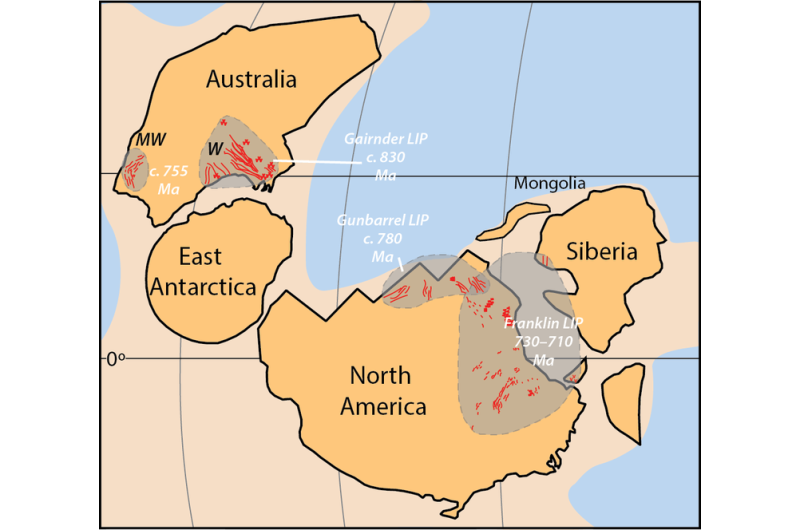
Complex interactions in the Earth system
Atmospheric carbon dioxide levels and global climate are regulated over long periods of time by the weathering of rocks. Over geologic time (hundreds of thousands of years) this process acts as a negative feedback on increasing atmospheric carbon dioxide. When higher temperatures drive higher rates of weathering, it acts as a kind of thermostat for the Earth.
However, this work demonstrates that the Earth's thermostat can fail spectacularly at times: the eruption of LIPs resulted in a Snowball Earth.
This period of time lasted from 720 to 635 million years ago and is known as the Cryogenian. It is a time of continental breakup and marks a major transition from a world dominated by bacteria to a world dominated by more complex life.
This highlights the complexity of the earth system and the unexpected interactions between volcanism, climate and life.
Provided by The Conversation
This article was originally published on The Conversation. Read the original article.![]()




















